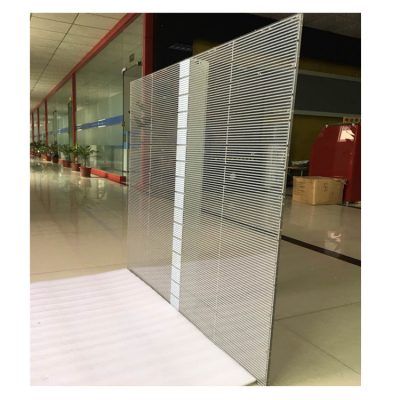with the advent of summer, everyone is unavoidable to be extremely hot. likewise, rental led display screen is more easily heated. high temperature will lead to a rapid increase in the probability of failure of electronic components, which will lead to a decline in the reliability of led display screen. in order to control the temperature of the electronic components in the led display screen and make it not exceed the maximum allowable temperature under the working environment of the led display screen, it is necessary to design the heat dissipation of the led display screen. how to design the heat dissipation of led display screen with low cost and high quality is the content of this paper.
there are three basic modes of heat transfer: heat conduction, convection and radiation.
heat conduction: gas heat conduction is the result of the collision of gas molecules when they move irregularly. heat conduction in metal conductors is mainly accomplished by the movement of free electrons. heat conduction in non-conductive solids is achieved by the vibration of lattice structure. the mechanism of heat conduction in liquids mainly depends on the action of elastic waves.
convection: refers to the heat transfer process caused by the relative displacement of various parts of the fluid. convection only occurs in fluids, and must be accompanied by thermal conductivity. convective heat transfer is the heat exchange process that occurs when a fluid flows through a surface of an object. convection is called natural convection due to the different densities of the cold and hot parts of the fluid. if the motion of fluid is caused by external forces (fans, etc.), it is called forced convection.
radiation: the process by which an object transmits its ability in the form of an electromagnetic wave is called thermal radiation. radiation energy transfers energy in vacuum, and there is a conversion of energy form, that is, heat energy into radiation energy and radiation energy into heat energy.
the following factors should be considered when choosing heat dissipation mode: heat flux density, volume power density, total power consumption, surface area, volume, working environment conditions (temperature, humidity, air pressure, dust, etc.).
according to the heat transfer mechanism, there are natural cooling, forced air cooling, direct liquid cooling, evaporative cooling, thermoelectric cooling, heat pipe heat transfer and other heat dissipation modes.
design method of heat dissipation for led screen
the heat exchange area between heating electronic parts and cold air, and the temperature difference between heating electronic parts and cold air directly affect the heat dissipation effect. this involves the design of air volume and air duct entering the led display box. in the design of ventilation pipeline, the straight pipeline should be used as far as possible to convey air, avoiding the use of sharp bending and bending pipeline. ventilation pipes should avoid sudden expansion or contraction. the expansion angle should not exceed 20 degrees and the contraction cone angle should not exceed 60 degrees. ventilation pipes should be sealed as far as possible and all laps should follow the flow direction.